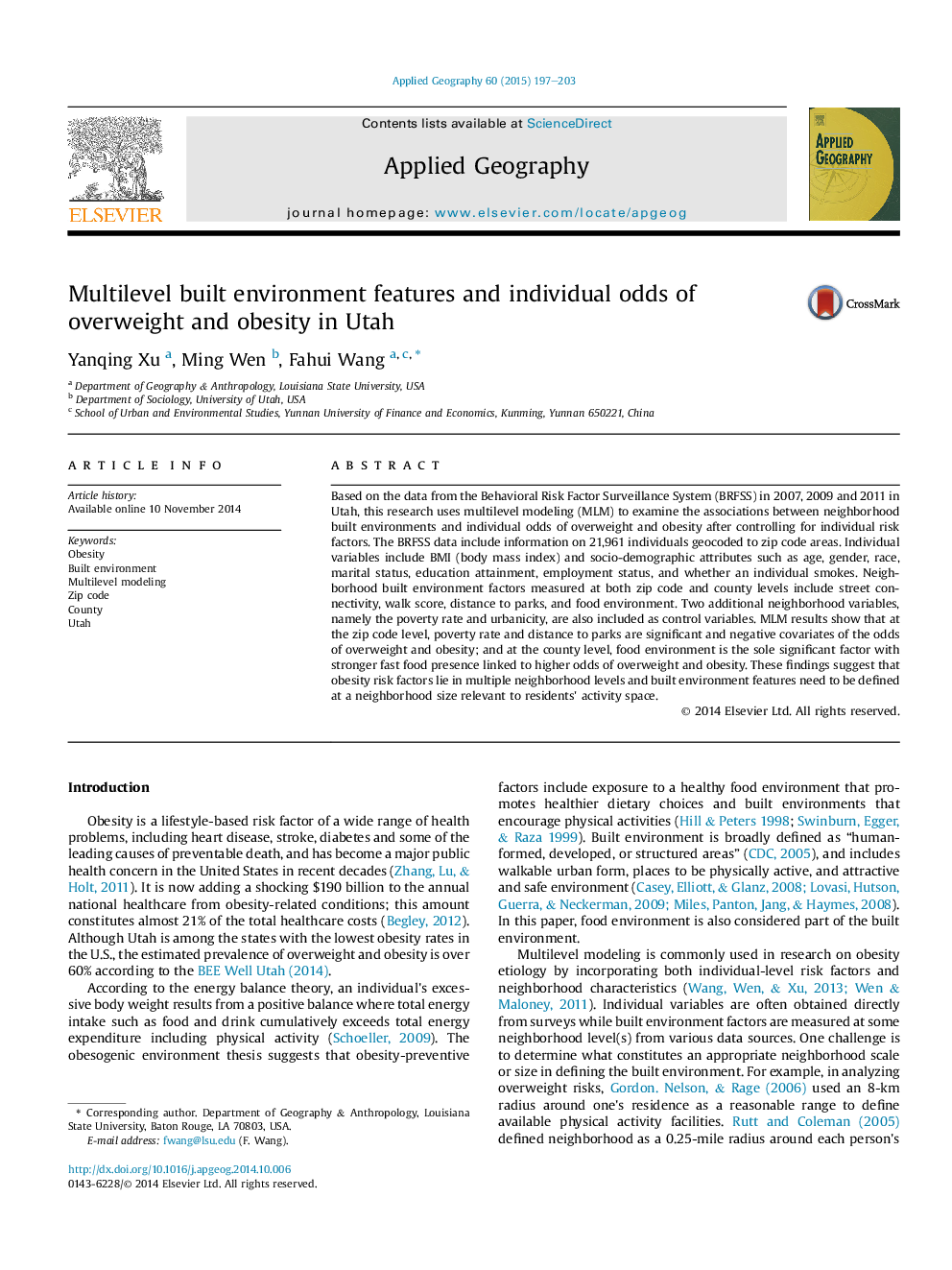| کد مقاله | کد نشریه | سال انتشار | مقاله انگلیسی | نسخه تمام متن |
|---|---|---|---|---|
| 6538533 | 158699 | 2015 | 7 صفحه PDF | دانلود رایگان |
عنوان انگلیسی مقاله ISI
Multilevel built environment features and individual odds of overweight and obesity in Utah
ترجمه فارسی عنوان
ویژگی های محیط زیست چند سطحی و شانس فردی از اضافه وزن و چاقی در یوتا
دانلود مقاله + سفارش ترجمه
دانلود مقاله ISI انگلیسی
رایگان برای ایرانیان
کلمات کلیدی
چاقی، محیط ساخته شده، مدل سازی چندسطحی، کد پستی، شهرستان، یوتا،
موضوعات مرتبط
علوم زیستی و بیوفناوری
علوم کشاورزی و بیولوژیک
جنگلداری
چکیده انگلیسی
Based on the data from the Behavioral Risk Factor Surveillance System (BRFSS) in 2007, 2009 and 2011 in Utah, this research uses multilevel modeling (MLM) to examine the associations between neighborhood built environments and individual odds of overweight and obesity after controlling for individual risk factors. The BRFSS data include information on 21,961 individuals geocoded to zip code areas. Individual variables include BMI (body mass index) and socio-demographic attributes such as age, gender, race, marital status, education attainment, employment status, and whether an individual smokes. Neighborhood built environment factors measured at both zip code and county levels include street connectivity, walk score, distance to parks, and food environment. Two additional neighborhood variables, namely the poverty rate and urbanicity, are also included as control variables. MLM results show that at the zip code level, poverty rate and distance to parks are significant and negative covariates of the odds of overweight and obesity; and at the county level, food environment is the sole significant factor with stronger fast food presence linked to higher odds of overweight and obesity. These findings suggest that obesity risk factors lie in multiple neighborhood levels and built environment features need to be defined at a neighborhood size relevant to residents' activity space.
ناشر
Database: Elsevier - ScienceDirect (ساینس دایرکت)
Journal: Applied Geography - Volume 60, June 2015, Pages 197-203
Journal: Applied Geography - Volume 60, June 2015, Pages 197-203
نویسندگان
Yanqing Xu, Ming Wen, Fahui Wang,
